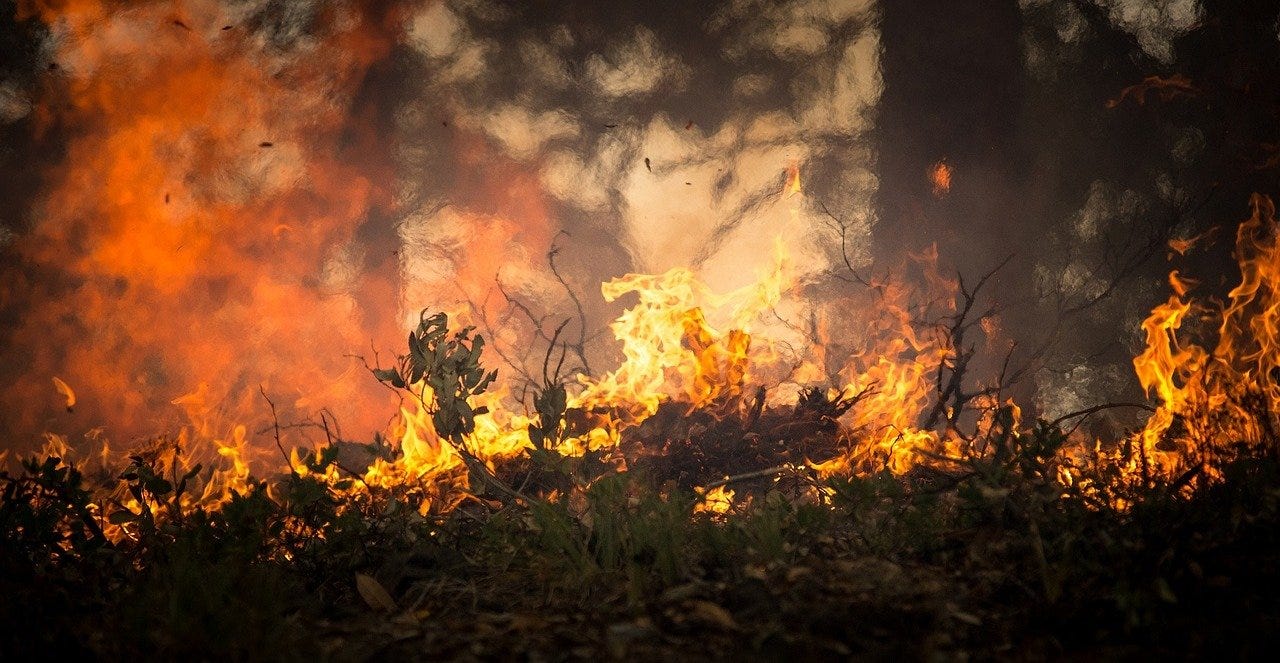Topics:
Kettle
The wildfires in California this year have produced some of the most harrowing and memorable images that many of us have seen in the news for many years. Behind each of these photographs are so many stories. About people, ultimately: communities, families; individuals that worked and saved hard for years and years, finally able to buy their own little space in this world. A space they could call home.
At the time of writing, 250,000 people have been displaced and the death toll from this year’s wildfire activity is now over 30, with 200 people still missing. The Camp Fire is now on course to be the most deadly in history, and has burned more than an astonishing 111,000 acres. The Glass Fire has now destroyed 220 homes in the Napa-Sonoma area. Overall, in the United States, over five million acres have burned, four million of those in California. Yet despite its devastating nature, insurers and reinsurers still have a long way to go before wildfire modelling matches the sophistication of traditional nat cat models such as those used to understand hurricanes that hit the East Coast of the United States.
Against this backdrop, it was timely that this summer we were introduced to the team at Kettle, a reinsurance MGA. The team at Kettle is using deep learning to model wildfire risk, and is now Anthemis’ latest insurance investment. Yes, there is hope for those who have been affected by climate change. But who’d have thought that the solution… was reinsurance?
Introducing Kettle
Kettle’s approach is to utilise satellite imagery and other data sources and then apply their proprietary deep learning algorithms to understand wildfire risk. Many of the important wildfire ignition factors can be captured by satellite images, with deep neural networks able to help with analysing the non-linear and complex relationships among these factors.
The Western United States, in particular, has experienced a rapid increasing trend in total annual wildfire burn area. Many fires are larger than some cities in the United States. Last year, the American Geophysical Union reported that – in California – a rise of 1.4 degrees Celsius in average summertime temperatures since the 1970s has coincided with a fivefold increase in acreage burned annually. The reasons for this range from the cumulative drying effects of atmospheric aridity and precipitation deficits, extreme offshore downslope wind events, seasonal effects, human activity, and vegetation gradients. However, the non-linearity in the interaction among the wildfire drivers makes the disentanglement of these drivers [of changing wildfire activity] difficult.
Traditional modelling of simulating past historical fires works well, unless those underlying variables have changed (things like brush density, rainfall, elevation slope, wind speed, etc.). Climate change and overpopulation have dramatically shifted these underlying variables, which in turn requires a far more detailed and real time approach to model risk. Unfortunately, this level of detail means enormous data sets, which are difficult for humans to synthesise into something useful, such as insurance underwriting. Kettle is taking cutting edge machine learning models and using them to simplify and synthesise enormous unstructured data sets, using these insights to write wildfire reinsurance policies.

The effects of climate change are real
Wildfire monitoring has become a popular topic of research in recent years, and we expect this to continue into the future. This isn’t, of course, a phenomenon exclusive to California or Oregon. In the first 9 months of the 2019–20 Australian bushfire season, for example, wildfires there burned an estimated 46 million acres, destroyed over 5,900 buildings, and killed at least 34 people. In California, the 2018 wildfire season was the deadliest and most destructive wildfire season in the state, with an estimate of 8,527 fires burning two million acres, destroying 22,751 buildings, and taking 103 human lives. 2020 looks like the worst fire season the American West has ever seen.
Extreme wildfires have been generating interesting risk transfer case studies of late. For example, in August 2020, Pacific Gas and Electricity, the California utility worst hit by wildfire losses and claims in recent years, successfully renewed almost USD 758m of insurance coverage against future potential liability claims, for fires that its infrastructure was deemed to have started. Interestingly, after a USD 60m retention, the cost of renewing this wildfire and non-wildfire insurance coverage was approximately USD 749 million. For context, the cost of the prior year’s insurance was approximately USD 212m.
Better wildfire underwriting
Kettle’s use of ultra-high resolution data and sophisticated deep learning techniques will unlock capacity at the reinsurance layer that has not previously had the ability to properly quantify and assess portfolios with wildfire risk. In turn, Kettle’s reinsurance will give primary writers the certainty they need, in order to offer wildfire coverage to their customers – at the right price, of course.
We agree with Andrew and Nathaniel: reinsurance really is the last stop against climate change, “the safety net below the safety net.” We’re proud to be supporting them in their mission to improve the industry and to protect people from the increasing disasters caused by climate change.

